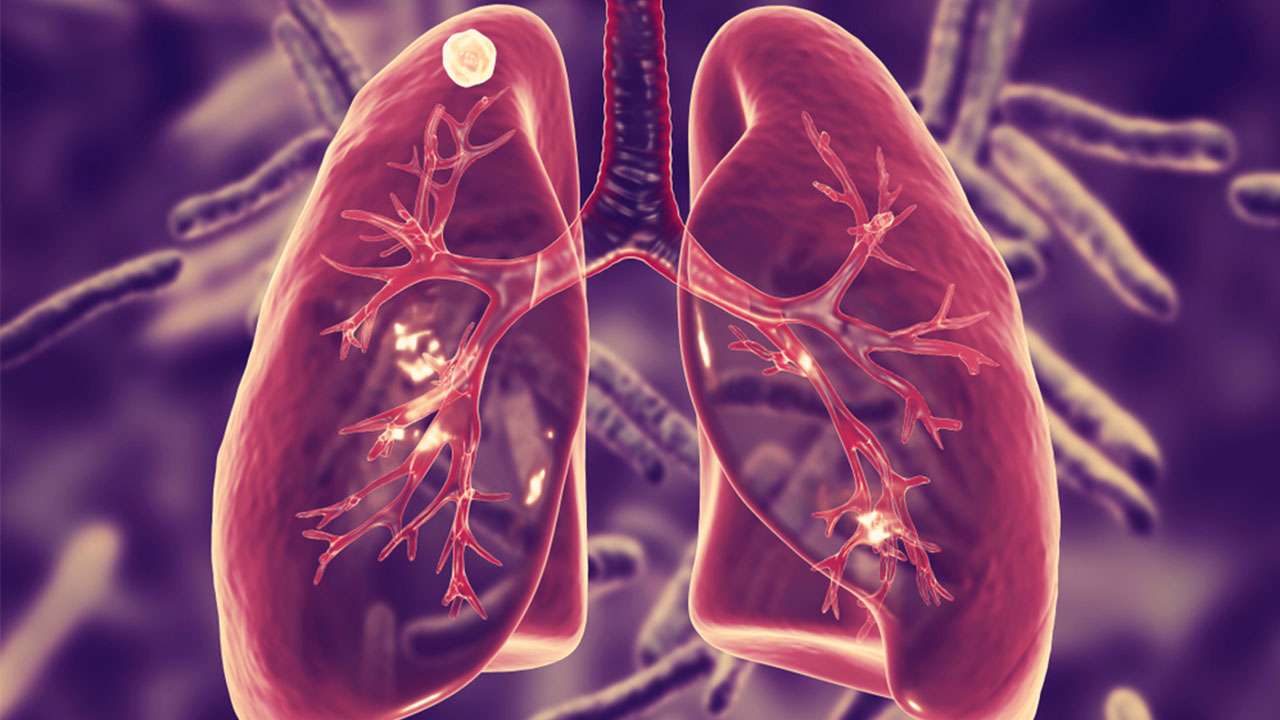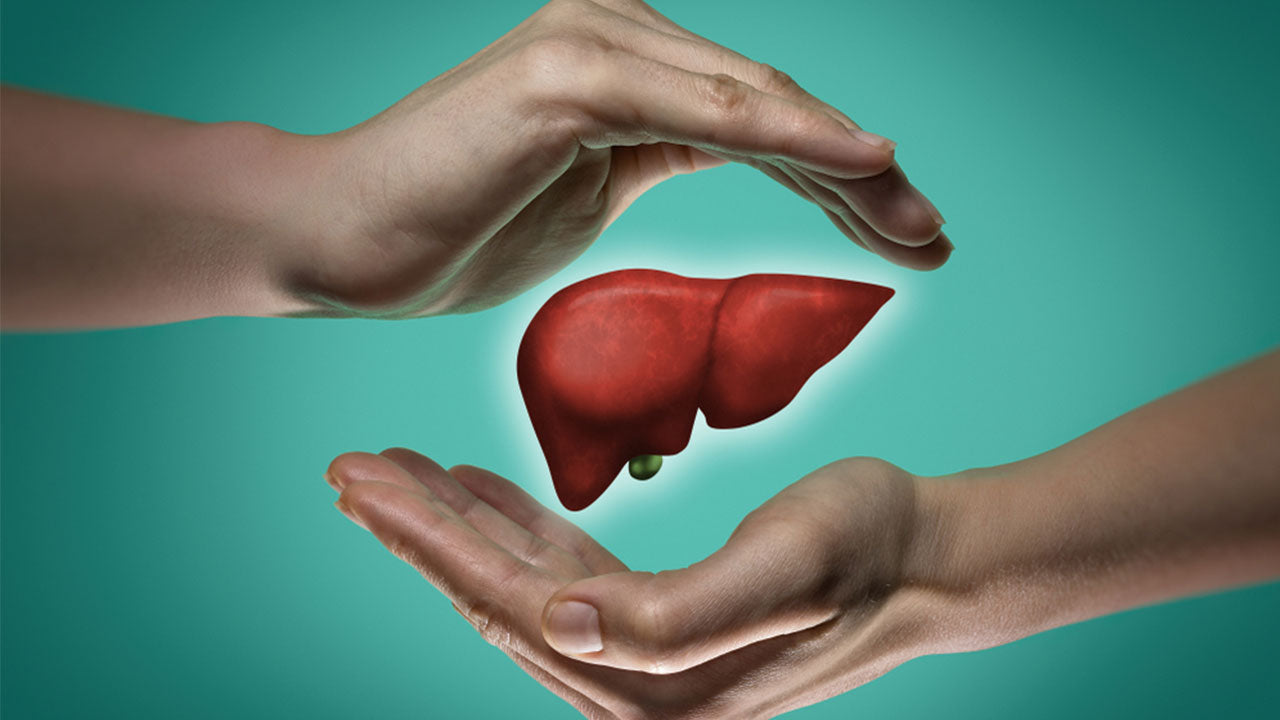Sarcoidosis: Causes, Symptoms, Diagnosis and Treatments
 By: by Amino Science
By: by Amino Science

Sarcoidosis is a rare disease that can affect any part of the body. While the condition can lead to serious complications in some individuals, others may experience mild symptoms accompanied by complete remission or even no symptoms at all, which makes sarcoidosis a complicated disease that may have you asking a lot of questions. So we invite you to come with us as we delve into the latest information on what causes sarcoidosis and take a closer look at its symptoms and available treatment options.
What Causes Sarcoidosis?
Sarcoidosis is a systemic inflammatory disease characterized by the growth of small clumps of inflammatory cells called granulomas. These granulomas may occur anywhere in the body, including the skin, nervous system, eyes, and heart, but they’re more likely to form in the lungs and lymph nodes of the chest.
In fact, according to the Foundation for Sarcoidosis Research, sarcoidosis affects the lungs of approximately 90% of people diagnosed with the condition.
While the exact cause of sarcoidosis remains unknown, the disease is associated with increased activity of the immune system. This fact, coupled with research demonstrating that exposure to chemicals, bacteria, viruses, fungi, and even dust may trigger the disease in some individuals, has led experts to hypothesize that some people’s immune systems may be mounting an inappropriate immune response in a misguided attempt to protect the affected organs of the body.
Moreover, there’s also some evidence to suggest that the body may be mounting an immune response against its own proteins—the so-called self-proteins.
While all this would seem to indicate that there may be an autoimmune component to the condition, sarcoidosis is not currently classified as an autoimmune disease.
Risk Factors for Sarcoidosis
It’s thought that anyone can potentially develop sarcoidosis. However, certain factors can increase an individual’s risk of developing the disease. These include:
- Family history: People with a family history of sarcoidosis are more likely to develop the condition themselves.
- Age: People between 20 and 40 years of age have a greater risk of developing sarcoidosis.
- Sex: Women are more at risk of developing sarcoidosis than men.
- Race and ethnicity: People of African and European descent—especially Scandinavians—are more at risk of sarcoidosis.
In addition, although lung and lymph node involvement is predominant in the vast majority of people affected by sarcoidosis, other manifestations of the disease differ based on a person’s race or ethnicity. For example, people of Japanese descent are more likely to have heart involvement, while people of both Japanese and African descent are more likely to have eye involvement and people of Northern European descent are more likely to have skin involvement.
Complications of Sarcoidosis
Most people with sarcoidosis don’t experience any complications. However, chronic inflammation and associated granuloma formation can eventually damage tissue, leading to permanent scarring (fibrosis) that may compromise the way the affected organ functions. Some of the potential complications seen with sarcoidosis include:
- Pulmonary fibrosis
- Blindness
- Kidney failure
- Arrhythmia
- Facial paralysis
- Heart failure
- Cataracts
- Glaucoma
Some individuals with sarcoidosis also develop complications that aren’t directly related to the granulomas themselves, but that nonetheless affect quality of life. These include:
- Vitamin D dysregulation: Sarcoidosis can cause a breakdown in vitamin D metabolism, which results in elevated blood levels and may lead to elevations in calcium in the blood (hypercalcemia) or urine (hypercalciuria).
- Erythema nodosum: This painful disorder involves the formation of red, painful bumps under the skin.
- Small fiber neuropathy: This disorder is a type of peripheral neuropathy that affects the nerve fibers in the skin. People with small fiber neuropathy typically experience severe shooting or burning pain that begins in the feet or hands.
Symptoms of Sarcoidosis
As mentioned, some people with sarcoidosis show little to no signs of the disease, while others experience debilitating symptoms. Moreover, symptoms vary depending on the organs affected and may appear either quite suddenly or slowly, over a long period of time.
Interestingly, people who present with a sudden onset of symptoms generally recover quickly, with no lasting effects. However, individuals who present with a gradual onset of symptoms tend to experience the more severe, chronic form of the disease.
People of Northern European descent are more likely to present with acute symptoms of sarcoidosis known as Lofgren’s syndrome. Characterized by fever, erythema nodosum, swollen lymph nodes, and joint pain, Lofgren’s syndrome is usually mild and of relatively short duration.
Those with sarcoidosis involving the lungs may present with shortness of breath, chest pain, wheezing, and dry cough, while those with eye involvement may experience pain, blurry vision, redness, light sensitivity, burning, and itching.
If sarcoidosis has affected the skin, an individual may experience erythema nodosum, lesions on the face and ears, and patches of skin that may be lighter or darker. And those with cardiac sarcoidosis may have chest pain, shortness of breath, fatigue, arrhythmia, palpitations, swelling, and episodes of passing out.
The symptoms associated with nervous system involvement of the disease are extensive and can mimic a number of other conditions, including multiple sclerosis. Symptoms may include:
| Ageusia (loss of sense of taste) | Confusion |
| Hearing loss | Double vision |
| Headache | Seizures |
| Speech impairment | Muscle weakness |
| Facial paralysis | Agnosia (loss of sense of smell) |
Individuals with sarcoidosis may also present with additional flu-like symptoms, including night sweats, weight loss, and muscle soreness.

Diagnosing Sarcoidosis
It can be difficult to diagnose sarcoidosis, not only because most people have little to no symptoms in the early stages, but also because any symptoms that are present can resemble those seen in a number of other conditions.
However, after speaking with you about any symptoms you’re experiencing, your health care provider will perform a physical examination to check for overt signs of the disease.
A variety of diagnostic tests may also be ordered to assist in ruling out other possible diagnoses. Some of these tests include:
- Laboratory tests: Urine and blood tests may be used to assess kidney and liver function.
- Chest X-ray: A chest X-ray may be performed to assess for cardiac or lung disease.
- Computed tomography scan: A CT scan is more sensitive than a regular chest X-ray and may be performed to assess for lung damage.
- Pulmonary function tests: These tests are used to measure the total volume of air the lungs can hold as well as the amount of oxygen the lungs can deliver to the blood.
- Electrocardiogram: An EKG measures the electrical activity of the heart and can identify irregularities in heart rate and rhythm.
- Biopsy: If sarcoidosis is suspected, a sample of tissue from the affected area may be taken to assess for granulomas.
Treatment of Sarcoidosis
While there’s currently no known cure for sarcoidosis, the condition often clears up on its own. What’s more, symptoms are frequently so mild (or nonexistent) that no treatment is necessary. But if treatment is necessary, it will be determined by the severity of symptoms and extent of the disease.
Those with severe symptoms and cases in which organ function has been compromised may be treated with the following medications:
- Corticosteroids: These anti-inflammatory medications, which include prednisone and prednisolone, are the most frequently used drugs in the treatment of sarcoidosis. While these medications can help control the inflammation that characterizes sarcoidosis, they also come with potentially serious side effects, including excessive weight gain, mood swings, osteoporosis, and insulin resistance.
- Immunosuppressants: If corticosteroids are ineffective, medications designed to suppress an overactive immune system may be prescribed. These medications include methotrexate and azathioprine and tumor necrosis factor (TNF) inhibitors like infliximab and adalimumab. TNF inhibitors work by blocking the action of TNF—a pro-inflammatory cytokine involved in the immune response.
- Antimalarials: In sarcoidosis patients with skin involvement or hypercalcemia, antimalarial drugs such as hydroxychloroquine may be prescribed.
- Procedures: In more advanced cases, surgery may be needed to repair or replace a damaged organ. For example, patients with heart rhythm problems may require a pacemaker or defibrillator, and individuals with severe heart, liver, or lung damage may eventually require transplantation.
Additional treatments like physical therapy to improve muscle strength, oxygen therapy to enhance breathing, and pulmonary rehabilitation to increase lung function may also be used, in addition to ongoing monitoring to keep track of what works and what doesn’t and to watch out for any signs or symptoms of complications.
The ultimate goal in treating sarcoidosis is to achieve remission. And more than half of all individuals with sarcoidosis will indeed go on to experience remission within 3 years of their diagnosis, while two-thirds will undergo remission after 10 years.
Eating for Sarcoidosis
Because sarcoidosis is an inflammatory disease, eating foods that help combat inflammation can be especially beneficial.
This means avoiding foods that promote inflammation, like refined carbohydrates, saturated fat, sodas, fried food, and red meat, and embracing foods rich in vitamins, minerals, phytonutrients, and antioxidants.
Some great choices to include in your anti-inflammatory diet are:
| Sweet potatoes | Berries |
| Broccoli | Kale |
| Spinach | Avocados |
| Walnuts | Salmon |
| Herring | Turmeric |
| Garlic | Green tea |
Taking an essential amino acid supplement can also help to protect against the muscle loss and wasting that occurs with sarcoidosis, and help maintain a healthy inflammation response. We recommend Heal.
If you or someone you love is experiencing symptoms that have you concerned, be sure to speak with your health care provider. If sarcoidosis is to blame, your health care provider can help you find the treatment option that’s right for you.

Up to 25% off Amino
Shop NowTAGS: conditions
Join the Community
Comments (0)
Most Craveable Recipes




 833-264-6620
833-264-6620



















